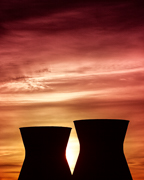|
Infinite Karma posted:I (used to) run a solar power company in California up until this year, I'm happy to offer advice without putting on a sales pitch. This is great info, I appreciate it! Power here is relatively cheap, so I reckon you may be dead on and it may be worth it to wait for prices to fall more. I’d want to buy outright in cash, so the less I have to spend the better lol I should also look into it you get payed for excess or not, and I gotta get a better idea of summertime energy usage since my aircon was out all last summer, and since this is only our second summer in this out I’d want to make sure the system covered everything Are there any particular brands of panels you recommend? Some of these brand names remind me of the early days of vaping, but I also see some big names like LG are in the mix
|
|
|
|

|
| # ? May 9, 2024 07:23 |
|
Infinite Karma posted:For system sizing, a well designed system should produce between 1000 (at the very minimum) kWh and 1600 (for the most optimal roofs) kWh per nameplate watt. This is mostly based on the director your roof faces and potential shading obstructions like trees and chimneys. A 1200 - 1400 multiple is pretty fair. Any proposal is going to have that number on it calculated with hypergeometric distributions of shading analysis and irradiance levels over time, but I'd guess roughly 6000 kWh is a fair estimate for generation of the 4.56 kW system.
|
|
|
|
FAT32 SHAMER posted:Are there any particular brands of panels you recommend? Some of these brand names remind me of the early days of vaping, but I also see some big names like LG are in the mix I'm not 100% sure about net metering in different places (paying you for excess generation) but as far as I know, in most places they do pay you for it. Only a few places like Hawaii have zero-net export rules. Brand names matter less than you might think. It's not like there's higher quality electrons that come out of brand name panels. Typically when you pay a premium it's to get more watts per panel, instead of more panels on your roof (i.e. if you don't have space for more panels). LG is a solid brand, off the top of my head I like Hanwha QCells, Panasonic, and Solaria also, but honestly things change really quickly in availability and price point. There are a few ultra cheap and lovely Chinese and Indian manufacturers that I see on the wholesale end, but I don't know if anyone is actually selling them. Inverters are a big part of the system also, SolarEdge and Enphase make the best ones, with SMA close behind, and everyone else is on the lovely side. spf3million posted:My guarantee is for 6,747 kWh/yr. South facing roof, no trees, ~45 degree pitch.
|
|
|
|
That makes sense, I guess I was mostly speaking in terms of “will this company be around for 10 years to cover the warranty if I needed it”, since back in the day I got owned twice by companies folding and then the warranty dying with it
|
|
|
|
Infinite Karma posted:Inverters are a big part of the system also, SolarEdge and Enphase make the best ones, with SMA close behind, and everyone else is on the lovely side. Do you get Fronius in the US? Very popular in Oz, I'm overdriving my 8.4kW single phase inverter with about 11kW of panels and it hasn't skipped a beat.
|
|
|
|
Fronius is more popular in Europe, and by what I hear, they're OK. Solar panels last forever (but power output degrades) as long as they're not physically damaged, but I would expect to change a string inverter after maybe 10-15 years.
|
|
|
|
Did the solar calculation myself but found the best spot (garage facing south west) isn't very good due to trees. For my part it looks like the most effective way to get my heating costs down (no AC) is: -Replace direct electric in garage with air-air heat pump -Install another firewood stove in the house in addition to my mass heater -Go over the HRV system to get the efficiency up
|
|
|
|
His Divine Shadow posted:Did the solar calculation myself but found the best spot (garage facing south west) isn't very good due to trees.
|
|
|
|
I'm in Finland and the house is built 2013-14
|
|
|
|
Infinite Karma posted:You can also lease a system, which is almost identical in cost to a purchase - it's basically only useful versus a financed purchase if you don't have enough tax liability to take advantage of the tax rebates or if you're playing 11th dimensional chess on your finances. And the last option is something called a "power purchase agreement" where you do a complicated lease agreement that you don't directly pay for, but then agree to pay a prepaid price for the power your system generates (instead of the power company). In my opinion, a PPA is garbage for almost everybody, but I'm sure there are people who have realized cost savings using one.
|
|
|
|
evil_bunnY posted:Have you had a building inspection done for heat loss? Most US houses/buildings I've been in have been ridiculously poorly insulated. A decade+ ago I guy from Montana I was chatting with mentioned that he was in the process of upgrading the windows on his house to dual-pane. I was pretty stunned by this as a Finn. I was born in '79 and I had never lived in a house that didn't have at least dual-panes, I may not have even seen a house used for living with single panes. Triple-panes seem to have been a stardard for quite some time and if you invest in insulation you probably get quad-panes with argon filling or something. During most of my childhood and youth we lived in an old house with dual-panes and a normal practice during winter was to tape the gaps in windows. During some winters we taped a plastic sheet over the windows.
|
|
|
|
Good ole double panes when kept in trim are really drat good though, good enough that swedish studies found it wasn't economical to replace them with triple pane ones until they wore out. I got all triple pane argon etc stuff in my house. No idea what shape it will be in in 20 years though. They don't age as well as the old windows even if they can last many decades.
|
|
|
|
ShadowHawk posted:If I'm renting a house but paying my own power bills is there a financial structure designed for us? Like I sublet them from the landlord until I move out, or something? Highly unlikely. From your perspective it doesn't make sense to pay for anything to be installed since you can't take them with you if you move. Best bet would be to talk to your landlord to see if they'd be willing to have them installed. If it's a PPA with no up front cost, maybe they'd do it but from their perspective, why take on the hassle? e: some utilities allow you to choose where your power comes from. Maybe yours has a 100% solar option. Probably more expensive per kWh than the standard and you still pay the transmission fees but it's an option if you want to "go solar" as a renter.
|
|
|
|
spf3million posted:Highly unlikely. From your perspective it doesn't make sense to pay for anything to be installed since you can't take them with you if you move. Essentially I'm looking for some version of I pay the solar company or landlord (instead of the standard power company) and they in turn have some sort of deal that carries forward with future tenants replacing me. Fundamentally, I use as much power as if I owned the home if not more, as I don't get to invest in other efficiency upgrades. So if it would make sense to build solar if I owned the home, then theoretically there is some payment scheme that makes sense to get the landlord to build it. I'm hoping for something easier than "ad-hoc deal with my landlord".
|
|
|
|
ShadowHawk posted:If I'm renting a house but paying my own power bills is there a financial structure designed for us? Like I sublet them from the landlord until I move out, or something? Things like a PPA might sound like a hack to make this happen, but the leasing type options still require the array on your roof/in your yard, and have a 25-30 year commitment.
|
|
|
|
His Divine Shadow posted:Good ole double panes when kept in trim are really drat good though, good enough that swedish studies found it wasn't economical to replace them with triple pane ones until they wore out. That argon is gone in five years or less. Fun side story. I worked at Enphase when they were just a small startup. They're a really good company and make really good products.
|
|
|
|
Infinite Karma posted:I'm not 100% sure about net metering in different places (paying you for excess generation) but as far as I know, in most places they do pay you for it. Only a few places like Hawaii have zero-net export rules. Florida is doing away with net metering because our population can’t read or count past ten, our state reps are wholly owned subsidiaries of publicly traded corporations, and the governor wants to be UberTrump, bigliest politician to be president of the United Stets. You know, the state where everyone runs their central air 11 months a year.
|
|
|
|
Saukkis posted:A decade+ ago I guy from Montana I was chatting with mentioned that he was in the process of upgrading the windows on his house to dual-pane. I was pretty stunned by this as a Finn. I was born in '79 and I had never lived in a house that didn't have at least dual-panes, I may not have even seen a house used for living with single panes. Triple-panes seem to have been a stardard for quite some time and if you invest in insulation you probably get quad-panes with argon filling or something. It's always interesting seeing how different house building standards are in different climates. Our (albeit dated) house has 15 square meters of drafty single pane floor to ceiling windows just in the one room I'm in right now. While it's not ideal for the hottest and coldest days of the year I think I'd struggle to make back the investment.
|
|
|
|
My 1.64 (4x410) kw rooftop has done pretty well it's first year, around 2700 kWh. It's running under net metering and has offset most of the house's consumption. I have spare capacity on the converter, and have the option of adding 2 more panels into it if consumption increases. Should pay for itself in 5-6 years. It's all Chinese tough, so the operational life will be a mistery, but it was cheap enough that I could buy it out of pocket. Even if it only does the warranted 12 years, it'll have been more than worth it.
|
|
|
|
Saukkis posted:A decade+ ago I guy from Montana I was chatting with mentioned that he was in the process of upgrading the windows on his house to dual-pane. I was pretty stunned by this as a Finn. I was born in '79 and I had never lived in a house that didn't have at least dual-panes, I may not have even seen a house used for living with single panes. Triple-panes seem to have been a stardard for quite some time and if you invest in insulation you probably get quad-panes with argon filling or something. Yeah. Our windows are from the 80s and are tripple pane. They still work quite well but are pain in the rear end to clean. Six surfaces on each window to wash. Which reminds me that it is about the time of the year to wash them again 
|
|
|
bad_fmr posted:Yeah. Our windows are from the 80s and are tripple pane. They still work quite well but are pain in the rear end to clean. Six surfaces on each window to wash. Which reminds me that it is about the time of the year to wash them again What weird rear end windows do you have that can be disassembled pane by pane and get dirty inside? Sounds like they are broken.
|
|
|
|
|
They work. Air from outside enters the house through the windows. Older construction so no any fancy valves for replacement air there.
|
|
|
|
I thought that multi-pane windows weren't supposed to let in outside air
|
|
|
|
Talking to my cousin who has solar in Northern Illinois (ComEd), and they give offset credits for excess generation. So at best you can take your bill to $0 for the month. Well, really $15 a month for the grid connection fee. I think he says every April the credits reset to 0. He has had the panels for 3 years now, and I don’t know too much of the specifics of the system he has. He seems pretty happy with it so far. The only hiccup was when it was going to be installed, it was originally going to be some sort of lease with a buyout option, but they wouldn’t give him a buyout price up front. So he just decided to pay for the whole thing up front instead.
|
|
|
|
QuarkJets posted:I thought that multi-pane windows weren't supposed to let in outside air If I start up any taxing workload on my office PC the radiator is cold within minutes. QuarkJets posted:I thought that multi-pane windows weren't supposed to let in outside air Senor Tron posted:It's always interesting seeing how different house building standards are in different climates. Our (albeit dated) house has 15 square meters of drafty single pane floor to ceiling windows just in the one room I'm in right now. While it's not ideal for the hottest and coldest days of the year I think I'd struggle to make back the investment. evil_bunnY fucked around with this message at 00:44 on Apr 27, 2022 |
|
|
|
QuarkJets posted:I thought that multi-pane windows weren't supposed to let in outside air It depends. In older construction, such as my house which is built in the 50s, the outside air comes in through the windows. More modern construction usually has separate pipings and valves for it. In those cases the windows are indeed very sealed. The main reason for the window ventilation is that the outside air gets preheated inside the window before entering the room space. So during winter the temperature difference is lower so it feels more comfortable. Newer more impearmeable windows, for this type of construction, come with a fresh air valve to allow the same function but in a more controlled manner. The flow rate of the valves can be adjusted and they can have filters and so on. So here is illustration how a modern window of this type works: 
|
|
|
|
Our windows dont let air in, but air can circulate in the outermost layer kinda like in the photo, it doesn't go further though. I believe the reasoning is to prevent trapping moisture since the outer layer is accessible and openable by people and not supposed to be sealed like the inner panes, so it's made with some slight leakage in mind. In the older two layer windows (think internal storm windows, you could remove the inside frame for summer if you liked) both sides would be sealed up tight which would cause condensation on the windows. So people would put jars of hydrochloric acid, or moisture absorbing materials in between the panes: 
His Divine Shadow fucked around with this message at 06:30 on Apr 27, 2022 |
|
|
|
Yes indeed, the outer layer needs to vent some air to prevent the moisture from accumulating between the windows. This usually happens if the house is for some reason overpressured. Typical example is upstairs rooms in a two floor house. The warm air wants to rise to the second floor and the pressure increases above the outside ambient pressure, and the warm and moist air is pushed out through the windows. Then it gets trapped inside and the moisture condenses when it meets the cold outside window.
|
|
|
|
https://twitter.com/enCoreEnergy_EU/status/1519419631135510528?s=20&t=rdFnIC4NgICFTHzU9Mxatw
|
|
|
|
CommieGIR posted:https://twitter.com/enCoreEnergy_EU/status/1519419631135510528?s=20&t=rdFnIC4NgICFTHzU9Mxatw
|
|
|
|
mystes posted:It's unfortunate that rather than building new, better nuclear power plants or just stopping using nuclear power, the solution based on political realities always ends up being to split the difference by continuing to operate ancient nuclear power plants that are way past their design life. Most of them received some upgrades post Fukushima to address issues, and most ancient plants are really not past their design life, the reality is we're finding nuclear plants really don't age as quickly as we thought they would, and even neutron embrittlement has become a less impactful issue. Reactors that were designed for 20-30 year lifetimes are now likely capable of 50-70 year lifetimes.
|
|
|
|
mystes posted:It's unfortunate that rather than building new, better nuclear power plants or just stopping using nuclear power, the solution based on political realities always ends up being to split the difference by continuing to operate ancient nuclear power plants that are way past their design life. why would we stop using nuclear power since it seems like it's fine when you take considerations into account
|
|
|
|
I was doing some more reading on the effects of Germany joining the international embargo on Russian fossil fuels, and was able to find an excellent English-language study that is worth reading. It's from a group of German economists, and represents the central academic opposition to the insistence by Scholz and others that any reduction in Russian fossil fuels would be catastrophic. In particular, they point out that substitution and reallocation is quite possible as Russia is not the sole provider of gas, oil, or coal to Germany, and that the main risk of economic shock comes from delaying an embargo until winter.quote:Rüdiger Bachmann, David Baqaee, Christian Bayer, Moritz Kuhn, Andreas Löschel, Benjamin Moll, Andreas Peichl, Karen Pittel, Moritz Schularick 25 March 2022 https://voxeu.org/article/what-if-germany-cut-russian-energy As a side note, the article also has a number of good English-language references, and in this one there's quite a bit of detail on German energy usage throughout their economy. It points out, for example, that fossil gas used for heating is taxed at only .03 cents / kWh, whereas electricity is taxed at 6.41 cents / kWh - it's not a mystery why gas boilers are so popular throughout Germany. https://www.bdew.de/media/documents/Pub_20190603_Energy-Market-Germany-2019.pdf
|
|
|
|
mystes posted:It's unfortunate that rather than building new, better nuclear power plants or just stopping using nuclear power, the solution based on political realities always ends up being to split the difference by continuing to operate ancient nuclear power plants that are way past their design life. which is exactly how we got fukushima in the first place
|
|
|
|
MightyBigMinus posted:which is exactly how we got fukushima in the first place I don't think that conclusion works as well as you think it does.
|
|
|
|
MightyBigMinus posted:which is exactly how we got fukushima in the first place No that's not how we got Fukushima at all. How we got Fukushima was TEPCO ignoring sound advice on the placement of their Generators and Backup Circuit Switchgear. Worth noting that 15 miles away, Fukushima Diani has the same reactors and same plant setup, but their switchgear was further above the water level and suffered minor ill effects despite going through the same tsunami. And yet, despite the meltdowns, despite the incident, no major impact to human life was caused. The sheer amount of hand wringing from the accident is hilarious given the number of people killed by the tsunami itself versus the plant meltdown. CommieGIR fucked around with this message at 14:52 on Apr 29, 2022 |
|
|
|
Even more remarkable that the psychological effect of the disaster from suicides and anxiety has killed far, far more people than the actual accident has and ever will via cancer. And yet it's rated as the same scale of disaster as Chernobyl.
|
|
|
|
aniviron posted:Even more remarkable that the psychological effect of the disaster from suicides and anxiety has killed far, far more people than the actual accident has and ever will via cancer. And yet it's rated as the same scale of disaster as Chernobyl. Fossil fuel power generation industry causes even more cancer and death than all of 'em. It's not even remotely close. It's remarkable to what degree we pardon the real killer of responsibility, focusing instead on an industry that actually has to account for its waste
|
|
|
|
If you distribute a cost widely enough it stops being a cost!
|
|
|
|

|
| # ? May 9, 2024 07:23 |
|
looks like our capitalist job creators were right about socialism, it lead to doom.
|
|
|







































